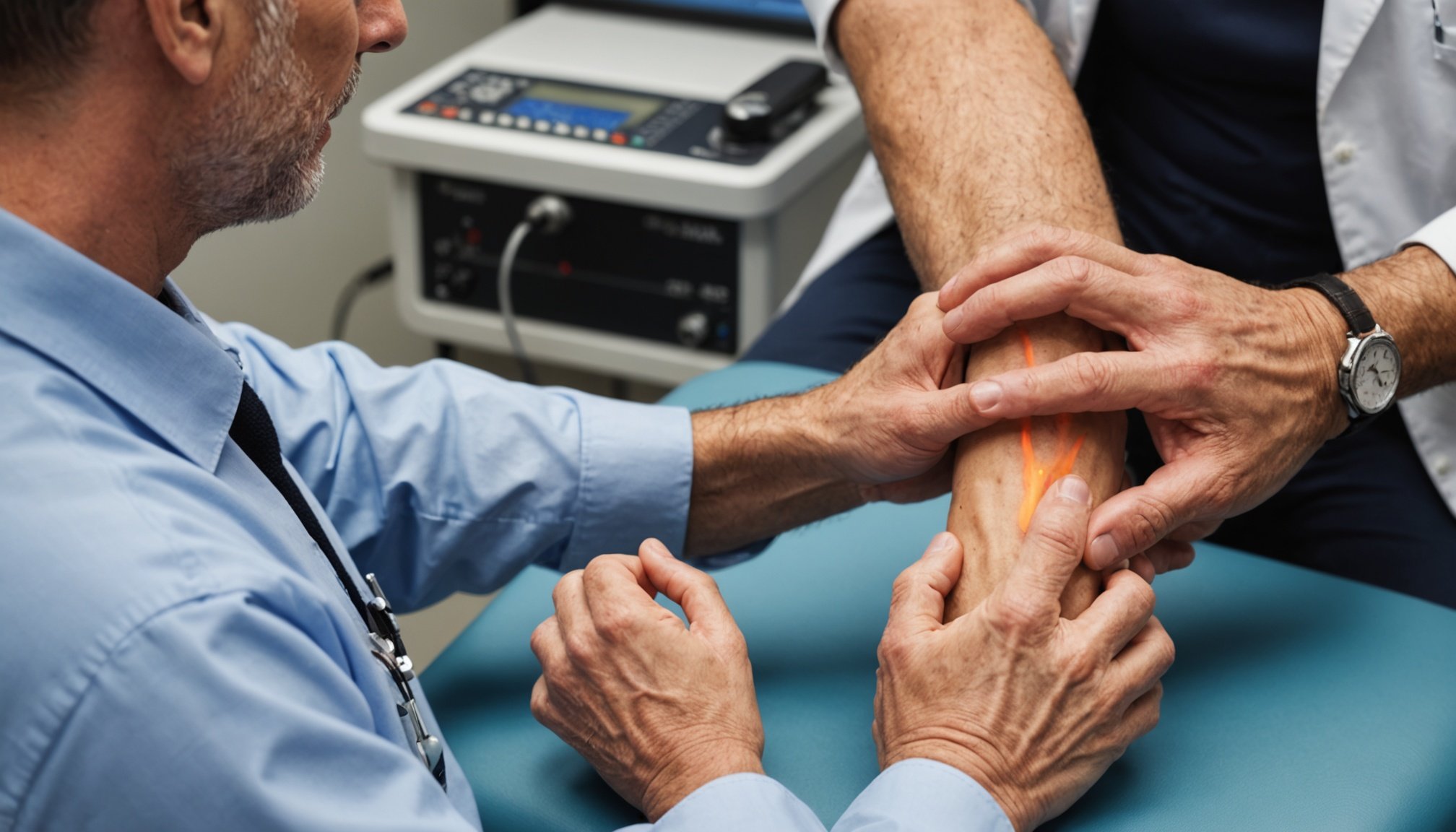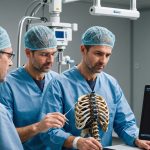Advances in Ultrasound Technology for Rheumatology
The realm of ultrasound technology in rheumatology has witnessed remarkable developments, especially in the field of inflammatory arthritis detection. Modern ultrasound devices now offer enhanced capabilities over traditional imaging techniques, delivering more precise data. Recent innovations have focused on improving medical imaging, enabling detailed evaluation of joint inflammation and damage, which is crucial in diagnosing conditions like inflammatory arthritis.
Traditional imaging methods, such as X-rays and MRIs, while effective, often fall short in detecting subtle changes in soft tissues and cartilage. Ultrasound technology, conversely, provides real-time imaging and allows for dynamic assessment. This capability is particularly beneficial in detecting synovitis—a hallmark of inflammatory arthritis—early on. The tactile nature of ultrasound also facilitates direct comparison with clinical findings during a patient’s examination.
Also to read : Find your ideal psychotherapist in central london today
With the advent of high-resolution imaging, the diagnostics for inflammatory arthritis have reached new levels of accuracy. Enhanced imaging allows for earlier intervention and treatment, potentially slowing disease progression. This shift in technology highlights the importance of continuing investment in research and development, ensuring rheumatologists have the most advanced tools at their disposal.
Current Practices in UK Rheumatology Using Ultrasound
In the realm of UK rheumatology practices, ultrasound has emerged as a pivotal tool, particularly in the diagnosis and management of inflammatory arthritis. Understanding the nuances of how ultrasound applications are woven into clinical pathways can provide valuable insights into its transformative role.
In the same genre : Revolutionary Approaches: Advanced Minimally Invasive Spine Surgery Techniques Employed by UK Orthopedic Surgeons
Integration of Ultrasound in Diagnostic Pathways
Ultrasound is now an integral part of diagnostic protocols within UK rheumatology practices. This imaging technology enhances the precision of diagnoses, enabling practitioners to visualise joint inflammation and other pathological changes more clearly. It is frequently used to corroborate clinical assessments, offering a non-invasive option to ascertain the presence and severity of inflammatory conditions.
Guidelines for Ultrasound Use in Inflammatory Arthritis
Clinical guidelines have been established to standardise ultrasound applications in rheumatology. These guidelines dictate the specific scenarios where ultrasound should be employed, ensuring its use is both effective and evidence-based. Consistency in application across the board promotes optimal patient outcomes while aligning with broader medical standards.
Training and Standardization for Rheumatologists
Training and standardisation in ultrasound usage are paramount. Ensuring all practitioners are thoroughly trained guarantees uniformity in diagnostic practices. Standardisation efforts aim to eliminate disparities in skill levels, fostering an environment where rheumatologists can utilise ultrasound to its full potential, ultimately benefiting patient care.
Case Studies and Real-World Applications
Ultrasound technology has proven to be transformative in numerous case studies, showcasing its application in diagnosis and treatment. One notable example involved the use of ultrasound in identifying early signs of cardiovascular disease, significantly enhancing patient outcomes. When used as a diagnostic tool, ultrasound allowed clinicians to detect abnormalities in heart structures with remarkable precision, leading to timely interventions.
In another groundbreaking case study, ultrasound was pivotal in the early diagnosis of abdominal aortic aneurysms (AAA). By providing clear imaging, healthcare professionals were able to assess the severity and plan appropriate interventions, improving survival rates. The consistency in positive patient outcomes illustrates the effectiveness of ultrasound in clinical settings.
Analysis of various patient outcomes across the UK has demonstrated substantial benefits in healthcare efficiency. Early detection facilitated by ultrasound has reduced the need for more invasive procedures, shortened hospital stays, and improved recovery times. These benefits emphasize the importance of continued investment and research in ultrasound technology to enhance diagnostic capabilities further.
Clinical settings in the UK have particularly benefited from the non-invasive nature of ultrasound, allowing widespread application in diverse medical fields, ranging from obstetrics to orthopaedics, thereby ensuring safer and more accurate diagnostic procedures.
Expert Opinions and Perspectives
Understanding the complexities of diagnostic advancements often requires referencing the opinions of rheumatology professionals. These experts illuminate pathways for innovation and excellence.
Interviews with Leading Rheumatologists
Interviews with prominent rheumatology professionals reveal a shared emphasis on early and accurate diagnosis of inflammatory arthritis. These experts highlight ultrasound as a tool for improving diagnostic precision. They argue it enhances visibility of joint inflammation, enabling more effective management strategies.
Summary of Expert Recommendations
Sifting through expert insights, key recommendations emerge for optimizing ultrasound use. Experts encourage comprehensive training programs for clinicians to fine-tune their skills. Moreover, they suggest integrating ultrasound into standard diagnostic routines, promoting consistency and accuracy in rheumatology diagnostics.
Perspectives on Future Trends in Ultrasound
Looking ahead, rheumatology professionals predict more personalisation in ultrasound technologies. Future trends may focus on integrating machine learning to augment diagnostic advancements. This evolution promises enhanced expert insights in identifying and treating inflammatory arthritis, transforming care standards.
Diagnostic advancements are thus a collaborative frontier, where professional experiences and technology guide better outcomes. As ultrasound evolves, so too will the methodologies and success in diagnosing complex conditions.
Implications for Patient Care and Future Developments
In the realm of patient care, enhanced detection methods offer significant influences on management strategies. With advancements in ultrasound technology, healthcare providers can detect conditions earlier, allowing for timely interventions and personalised treatment plans. This precision in early detection promotes effective care, reducing long-term complications and improving patient outcomes.
Future Developments in Ultrasound Technology
Looking ahead, innovations in ultrasound promise transformative impacts. One anticipated advancement is the integration of artificial intelligence (AI) with imaging systems, which could enhance diagnostic accuracy by providing instantaneous analysis of complex data. AI-driven ultrasounds might simplify processes, providing physicians with reliable insights faster than ever before.
Shaping Rheumatology Practice
These technologies also promise to reshape rheumatology practice fundamentally. Enhanced ultrasound capabilities could lead to more proactive management of rheumatological conditions, as ongoing developments aim to refine diagnostic tools and therapeutic options. For instance, ultrasound could play a leading role in monitoring disease progression and responding to individualised treatment plans. This heralds a more dynamic and responsive approach, aligning with patient needs and advancing healthcare delivery. As these technologies evolve, rheumatology might witness a paradigm shift, focusing on preemptive care and patient-centric solutions.











